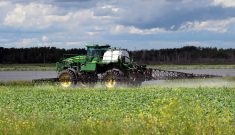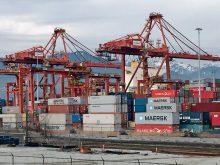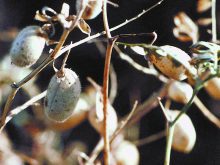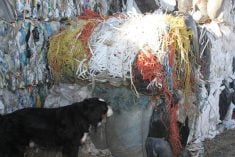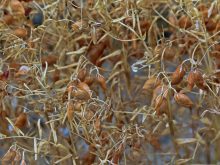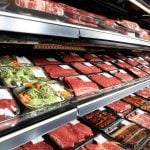YORKTON, Sask. – It was fitting that storm clouds were omnipresent on the day Richardson International Limited unveiled its new canola crushing plant to the public.The path to the grand opening of the $170 million facility on June 22, from project conception in 2006 was cluttered with obstacles.“There were a lot of times along the road where one’s resolve could have been undermined,” company president Curt Vossen told those at the grand opening of the plant five kilometres northwest of Yorkton, Sask.The first blow came on Sept. 7, 2006, shortly after Richardson’s morning announcement that it would be constructing a plant capable of processing 840,000 tonnes of locally grown canola a year, the largest project in the company’s 153 year history.That afternoon, Louis Dreyfus Canada announced it would build a similar sized crushing facility in the same community.“At least we knew we had the location right,” joked Vossen.Louis Dreyfus began accepting canola deliveries at the LDM Foods plant it jointly owns with Mitsui & Co. on Oct. 13, 2009. Richardson’s official startup was June 10, 2010.The Richardson plant will get most of its feedstock from a 100-kilometre radius.“Without a doubt and without any equivocation, there is plenty of canola for two plants,” he said.But he acknowledged procurement will be a challenge in this inaugural year of operation because the Yorkton area is probably wetter than anywhere else on the Prairies.The company will rely on its grain-handling network to tap into supplies as far away as Manitoba.Shortly after Richardson ann-ounced its intentions to build, there was an unprecedented, speculator-driven rise in grain and oilseed prices, which weakened the potential margins for the project.That was followed by a dramatic run-up in construction costs. Material and labour costs rose at the rate of 1.5 percent a month, contributing to a $70 million hike in the overall project budget.Then came the global economic meltdown of 2008 and 2009 that dried up investment capital.Company chair Hartley Richardson said nothing could deter Canada’s largest privately owned agribusiness from pushing forward with the project.The Richardson family and the company’s board of directors remained committed, because they knew their longstanding customers were clamouring for healthier vegetable oil.“Even when the storm clouds in 2008 and 2009 were at their darkest, we did not slow down on the construction of this facility and we certainly did not cut any corners,” he said.Vossen said producers will be the direct beneficiaries. He expects fierce competition for this year’s canola crop, which has been downsized but should still top 15 million acres.“It will be a good situation price-wise for farmers in Western Canada as a result,” he said.Wayne Thompson, executive director of the Saskatchewan Canola Growers Association, agreed that the plant should boost prices and farmer profitability.“You can’t take this much canola out of the export market without affecting the farmers’ bottom line in a positive way because there are less transportation costs,” he said.Thompson said it will encourage farmers to continue planting canola, which means continued levy dollars will flow to his association.Vossen said the facility will keep Richardson’s customers happy. Canola oil sales have been growing by three percent annually, which is a faster growth rate than any other edible oil aside from palm oil.At full capacity, the plant will be capable of producing 1,000 tonnes of fully refined, food-grade oil per day.The target market is the food manufacturing industry in Canada and the United States but until that business fully materializes, the company may have to look to export markets such as China.Canola meal from the plant will be shipped to U.S. dairies.Pat VanOsch, general manager of the plant, said they have taken steps to avoid the salmonella contamination that has disrupted meal exports into the U.S. at other Canadian crushing facilities.The plant will generate 75 to 80 percent of its revenue from oil sales and the remainder from meal sales.It can ship 28 rail cars of oil and meal per day.
Read Also

Canadian farmers need level playing field for regulations – says Minister MacDonald
Federal agriculture minister Heath MacDonald is urging the Canadian Food Inspection Agency and the Pest Management Regulatory Agency to speed up their decision making.




